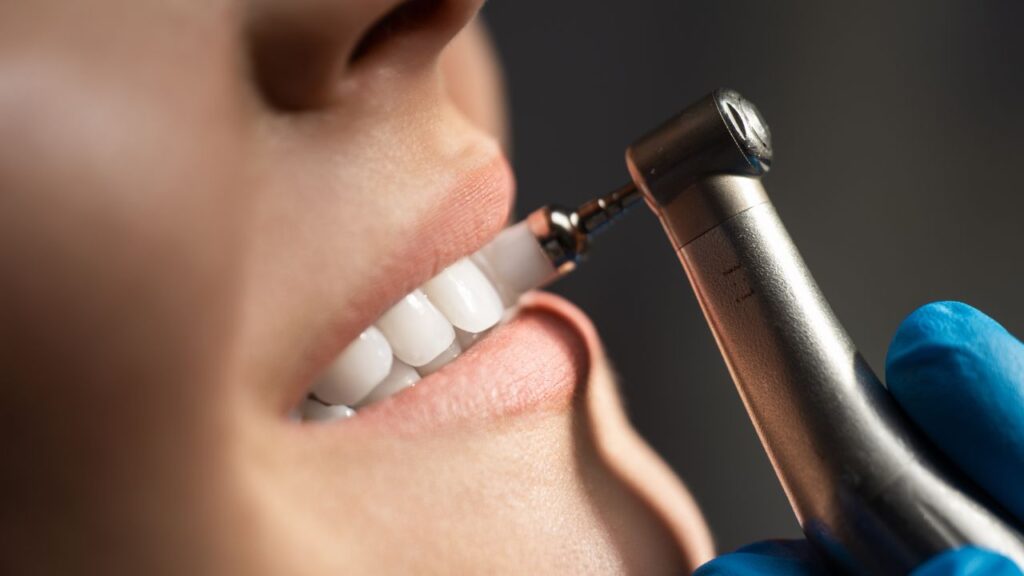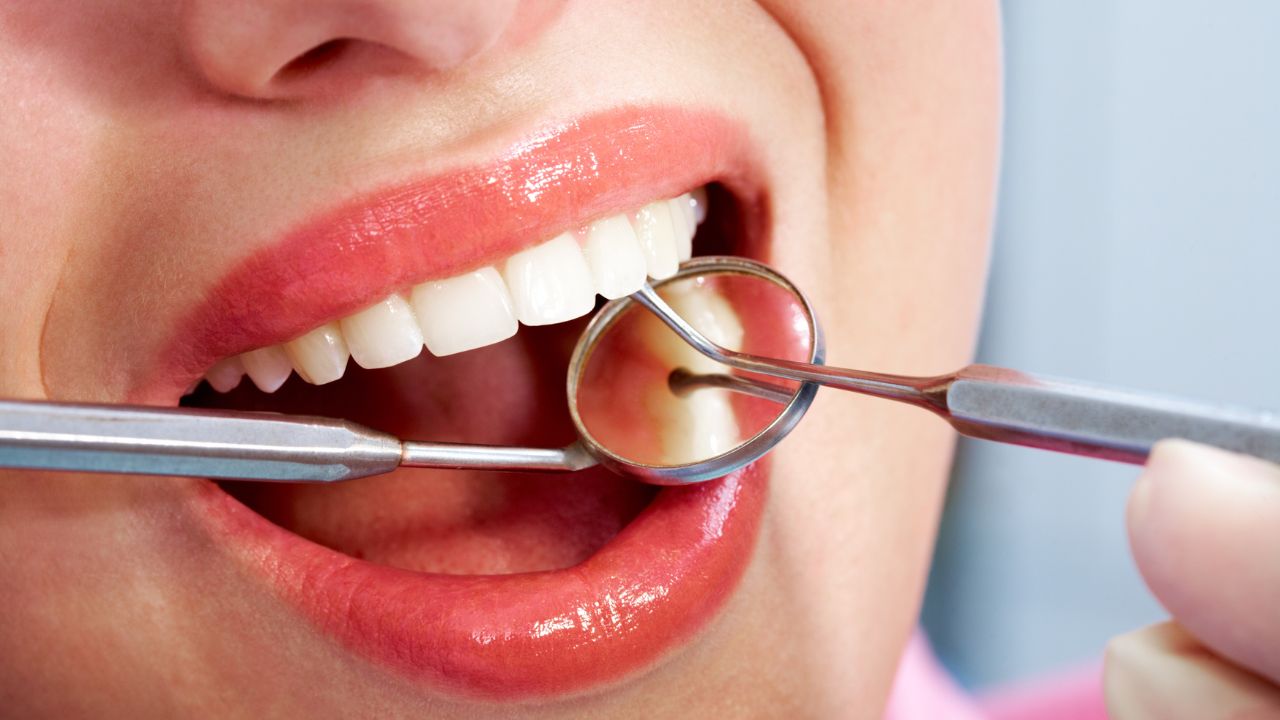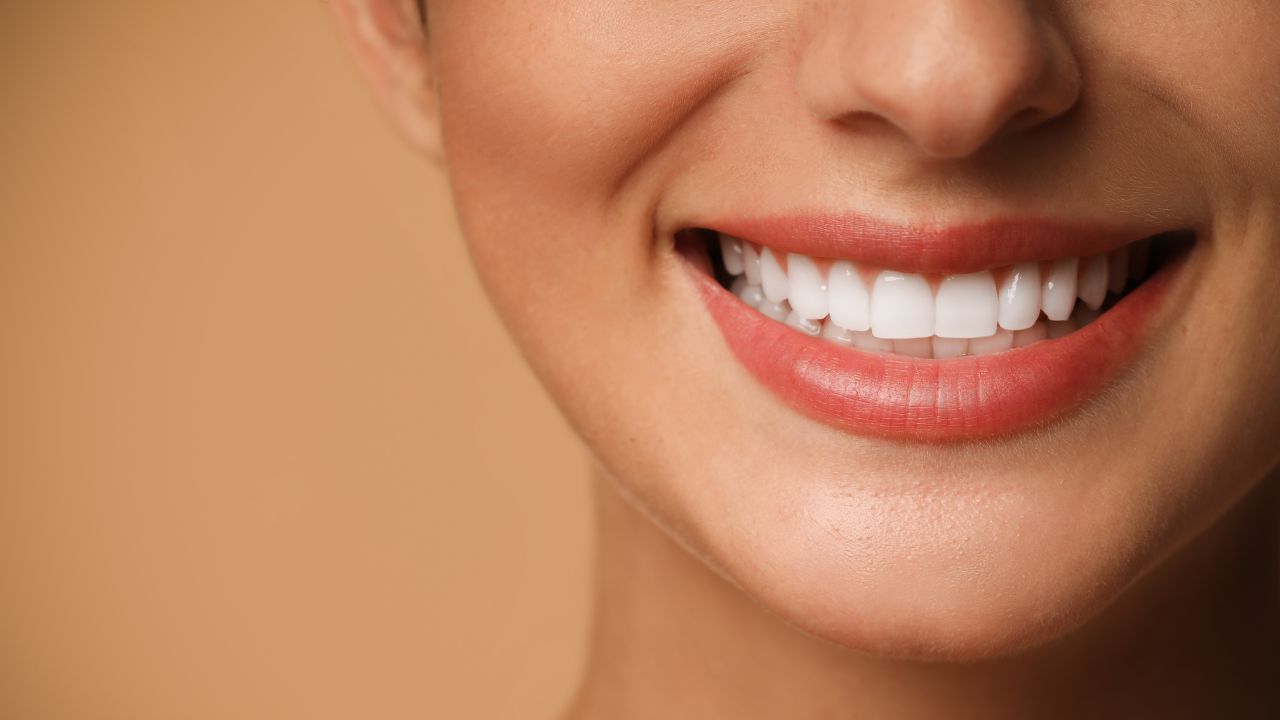For many people in Melbourne, the world of dental pricing can feel opaque, with costs varying dramatically from one clinic to another.
1) What Exactly Are You Paying For?
Understanding the components of a dental check-up and clean is the first step in understanding its cost.
A. The Standard Check-Up, Scale, and Polish.
Any routine dental visit consists of three key procedures designed to diagnose issues early and maintain oral health
i. The Check-Up
This is a thorough evaluation where a dentist assesses the health of your teeth, gums, jaw, and soft tissues. This diagnostic phase is critical for identifying the early signs of tooth decay, gum disease, and other abnormalities, including a swift and painless screening for oral cancer.
ii. The “Scale and Clean” (Prophylaxis)
This is the core cleaning process. Throughout the day, a sticky film of bacteria called plaque constantly forms on teeth. If not removed through daily brushing and flossing, it can harden into tartar, also known as calculus. This hardened deposit cannot be removed with a regular toothbrush at home.
The “scaling” process involves a dentist or hygienist using specialised ultrasonic or manual tools to professionally remove this tartar from the tooth surfaces and along the gum line.
iii. Polishing
After scaling, the dentist performs a final polish. This involves using a slow-speed handpiece with a soft rubber cup and a gritty paste to smooth the tooth surfaces.
This not only removes external stains from substances like coffee and tea but also makes it more difficult for new plaque to accumulate, helping to keep teeth cleaner for longer.
B. Beyond the Basics
Depending on an individual’s specific needs and dental history, a standard visit may include additional services.
Dental X-Rays (Radiographs)
X-rays provide the dentist with a view of what is happening beneath the surface, areas invisible to the naked eye. They are crucial for detecting decay between teeth, problems under existing fillings, impacted teeth, and bone loss associated with gum disease. The need for X-rays is not universal for every visit; it depends on factors like your dental history and current oral health status. Common types include “decay-view” or bitewing X-rays, which are often taken every couple of years as part of a routine check-up.
Fluoride Treatment
This can be thought of as a protective topcoat for your teeth. A concentrated fluoride gel or varnish is applied directly to the teeth, where it works to strengthen the enamel. This makes the teeth more resistant to acid attacks from bacteria and sugars, thereby helping to prevent cavities.
C. Standard Clean vs. Deep Clean
It is vital to understand the difference between a standard clean and a deep clean, as they address different needs and represent a significant divergence in complexity and cost.
Standard Clean
A standard clean, or prophylaxis, is a preventative procedure performed on a healthy mouth to maintain it. It focuses on cleaning plaque and tartar from the visible parts of the teeth, above the gum line.
Deep Cleaning (Scaling and Root Planing)
In contrast, a deep clean is a therapeutic procedure designed to treat active gum disease (periodontitis). It is a more intensive treatment that involves cleaning below the gum line to remove plaque and tartar buildup from the roots of the teeth.
The second part of the procedure, “root planing,” involves smoothing the tooth roots.
This helps the gums to heal and reattach to the teeth and makes it more difficult for bacteria to colonise in the future. Due to its more invasive nature, a deep clean may require local anaesthesia for comfort and can be spread across multiple appointments.
Neglecting routine, low-cost preventative care can lead directly to the need for this more complex and costly therapeutic intervention.
2) The Price Tag: Dental Cleaning Costs In Melbourne
Dental cleaning costs in Melbourne are not standardised, leading to a wide range of prices across the city. Understanding the typical costs and the prevalence of special offers can help in navigating this landscape.
A. The General Price Range For a Standard Clean (Without Insurance)
For a patient paying out-of-pocket, the cost for a standard check-up, scale, and polish can vary significantly.
General Costing In Melbourne
Generally, a standard check-up and clean in Melbourne will cost between $200 and $350. Some clinics in the CBD may offer packages starting from around $226, while more comprehensive services that include additional diagnostics can reach up to $416.
Prices Based On Location In Melbourne
Location plays a significant role. As noted by Melbourne residents, clinics in the CBD and inner suburbs often charge in the $200 to $380 range.
In contrast, clinics in the outer suburbs can be more affordable, with prices often falling between $170 and $200. This is consistent with reports that urban clinics have higher overheads, such as rent and wages, which are reflected in their pricing.
Beware Of Extremes
It is not unheard of for new patient quotes to reach as high as $500 or $600. These higher costs typically arise when an initial comprehensive examination for a new patient includes a full suite of diagnostics, such as multiple types of X-rays (like a full-mouth OPG) and other assessments, in addition to the clean itself.
This highlights a potential gap between an advertised “clean” price and the final bill for a first-time comprehensive visit, which often necessitates more thorough diagnostics.
B. The Cost of a Deep Clean (Scaling and Root Planing)
The cost structure for a deep clean is different from a standard clean, reflecting its status as a more complex medical treatment.
The Per-Quadrant Model
Deep cleaning is typically priced per quadrant (one-quarter of the mouth), as treatment may only be necessary in specific areas affected by gum disease.
Estimated Costs
The cost per quadrant in Australia generally ranges from $150 to $300. One Melbourne-based clinic quotes a starting price of $232.50 per treatment area.
Consequently, a full-mouth deep cleaning procedure could cost anywhere from $600 to over $1,600, starkly illustrating the financial benefit of preventative care.
C. Spotting A Bargain: New Patient Offers
Dental clinics in Melbourne often use discounted introductory offers to attract new clients.
A Key Savings Strategy
Many dental clinics advertise heavily discounted packages for first-time patients. This is a deliberate customer acquisition strategy, where a lower-priced initial service is used to establish a long-term relationship with a patient.
Examples:
- DentalOne advertises a $119 check-up and clean package for patients without insurance, a service they value at $235 to $284.
- North Carlton Dental Group has promoted a $150 check-up.
The Catch. It is important to recognise these for what they are: introductory deals. The price for subsequent, ongoing appointments will almost certainly revert to the clinic’s standard, higher fee structure.
Dental Price Comparison
| Service | Typical Price Range | Common New Patient Offer Range | Notes |
| Standard Check-up & Clean | $200 – $350 | $99 – $169 | Standard price varies by location. Offers are for first-time visits only. |
| Deep Cleaning (per quadrant) | $150 – $300 | Not typically offered | Required for treating gum disease. Full mouth can cost $600+. |
| Bitewing X-rays (set of 2) | $70 – $100 | Often included in new patient packages | May be an additional cost on top of a standard clean. |
| Fluoride Treatment | $20 – $50 | Often included in new patient packages | Recommended for decay prevention. |

3) Key Factors That Influence the Final Cost
Several variables contribute to the final price of a dental cleaning. Understanding these factors can help you evaluate quotes and make informed decisions about your care.
Location, Location, Location
The Urban Premium: There is a clear price difference between metropolitan and suburban dental clinics. Practices located in prime areas like the Melbourne CBD consistently charge more than their counterparts in outer suburbs or regional Victoria.
This price discrepancy is due to basic economics. Higher commercial rent, staff wages, and general operating costs in the city centre are factored into the price of services. As Melbourne residents have found, travelling just 20 minutes out on a train line can often lead to significant savings
The State Of Your Oral Health
The condition of a patient’s mouth is a primary driver of cost. In this sense, the patient is an active participant in determining their own dental bill.
If the examination reveals signs of active gum disease, the necessary procedure escalates from a preventative standard clean to a therapeutic deep clean. This shift fundamentally changes the nature and cost of the treatment.
The Clinic And The Clinician
The dental practice and the professionals working there also influence pricing. The final price tag is often a proxy for a bundle of factors beyond the procedure itself.
Experience and Specialisation: A dentist with decades of experience or a specialist, such as a periodontist who focuses on gum health, will command higher fees than a general dentist or a recent graduate.
Technology and Amenities: Clinics that invest in state-of-the-art technology, like 3D CBCT scanners or digital intraoral scanners, may incorporate the cost of this equipment into their fees.
Likewise, practices that offer a more luxurious or comfortable environment may charge a premium for the enhanced patient experience.
Type of Practice: The business model of the clinic matters. Large, corporate-owned dental chains may have different pricing structures and overheads compared to smaller, independent private practices.
4) Accessing Public & Low-Cost Dental Services
For those without private health insurance or on a limited income, public and university clinics provide vital, affordable alternatives.
i. Victoria’s Public Dental System
This system serves as a crucial safety net, but access is means-tested and often involves significant waiting times for non-urgent care.
Who is Eligible? To be eligible for adult public dental services, a person must live in Victoria and hold a valid Health Care Card, Pensioner Concession Card, or Department of Veterans’ Affairs (DVA) Pensioner Concession Card. All children aged 0-12 are eligible for care, regardless of their family’s income.
What Does it Cost? The system is heavily subsidised, not free. For eligible adults, there is a co-payment of approximately $32 per visit, capped at a maximum of $128 for a full course of general care. For children aged 0-12 who are not on a concession card, there is a flat fee of around $39 per course of care.
The Reality of Waiting Lists: While emergency dental issues are prioritised, there are often long waiting lists for routine, non-urgent general dental care.
Child Dental Benefits Schedule (CDBS): This is a federal government scheme providing up to $1,132 in benefits over two calendar years for basic dental services for eligible children aged 0-17. This can be used at both public and participating private dental clinics.
ii. University Clinics
Melbourne’s University dental clinics serve as an excellent middle ground for those who are not eligible for public care but find private fees to be a barrier.
The Option: The Melbourne Dental Clinic, associated with the University of Melbourne, is a well-regarded, high-quality, and affordable option.
The Model: Treatment is provided by senior, final-year dental students who work under the close and constant supervision of fully qualified and experienced dentists and specialists.
The Cost: Fees are considerably lower than in private practice, often set at about 20% less than the Australian Dental Association’s average fee schedule. A check-up and clean performed by a student costs approximately $166. Further discounts are available for university students, staff, and alumni.
The Trade-Off: The primary trade-off is time. Because it is a teaching environment, appointments are typically longer than they would be in a private clinic.
Comparison Between Different Types Of Dental Clinics
| Feature | Private Clinic | Public Clinic (DHSV) | University Clinic |
| Typical Cost (Standard Clean) | $200 – $350 (standard rate) | ~$32 per visit (capped) | ~$166 |
| Eligibility | Open to all | Concession card holders, specific child age groups | Open to all |
| Waiting Times | Low to none | Can be long for routine care | May have waiting lists |
| Insurance Usability | Yes (HICAPS on-the-spot claims) | N/A (co-payment system) | Yes (can claim on private insurance) |
| Best For | Convenience, choice of dentist, those with good private health cover. | Eligible low-income individuals and families, emergencies. | Budget-conscious individuals not eligible for public care, who are not in a hurry. |
Conclusion
Navigating the cost of a dental check-up and clean in Melbourne can be more straightforward with the right information. A standard visit typically ranges from $200 to $350, but significant savings can be found through new patient offers, visiting suburban clinics, or utilising university dental schools.



